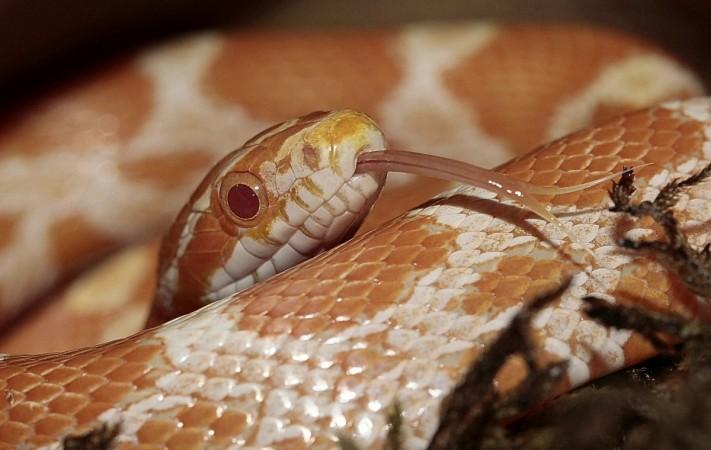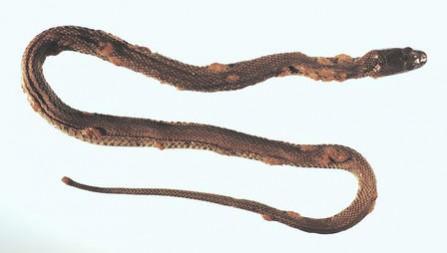
Scientists warn that a potentially deadly disease caused by a fungus has affected several species of snakes in the US, and has posed substantial threat to snake populations worldwide as it is spreading fast.
Dubbed the snake fungal disease, the infection has been caused by the fungus Ophidiomyces ophidiodiicola. As many as 23 wild species in the US, including ratsnakes, milksnakes, gartersnakes, and viperids have been infected by the fatal disease which has also been found in three European species.
"This really is the worst-case scenario," Frank Burbrink, associate curator in the Museum's Department of Herpetology and the lead author of the research paper published in the journal Science, said in a statement. "Our study suggests that first responders shouldn't just be looking for certain types of snakes that have this disease, but at the whole community."
The fungal disease causes fast-spreading lesions on the animal's head and body. Although scratches can disappear after the snake molts, rapid shedding of skin and other changes to its daily habit due to the infection can put the reptile at a risk for other dangers, such as predation, exposure and starvation.

According to researchers the deadly fungus has been recorded in wild snakes inhabiting much of the Eastern United States, which mostly includes the coastal, forested, and adjacent prairie habitats and dry areas east of the Continental Divide.
The disease primarily affects the skin of snakes, and conditions experienced by wild snakes may result in development of life-threatening infections.
"Some of the most devastating wildlife diseases ever documented, such as white-nose syndrome in bats and chytridiomycosis in amphibians, are caused by fungal pathogens," Jeffrey Lorch, a microbiologist with the U.S. Geological Survey National Wildlife Health Center, and a study co-author, said. "These diseases have had such great impacts because they affect multiple species, and it now looks like the same is true of snake fungal disease."
To determine potential common traits between the infected snakes and those that might be susceptible in the future, researchers used an artificial neural network, and the results it yielded were alarming.
Scientists found that snakes infected by the fungal disease shared no distinguished evolutionary, physical, or ecological traits, indicating that snakes across the globe may be vulnerable.
"Researchers need to work with decision makers to prevent snake fungal disease from spreading, survey museums and field sites to determine the current distribution of the disease, run trials in the lab, and start working on treatments," Karen Lips, an associate professor of biology at the University of Maryland, College Park, and a co-author on the study, said.

















